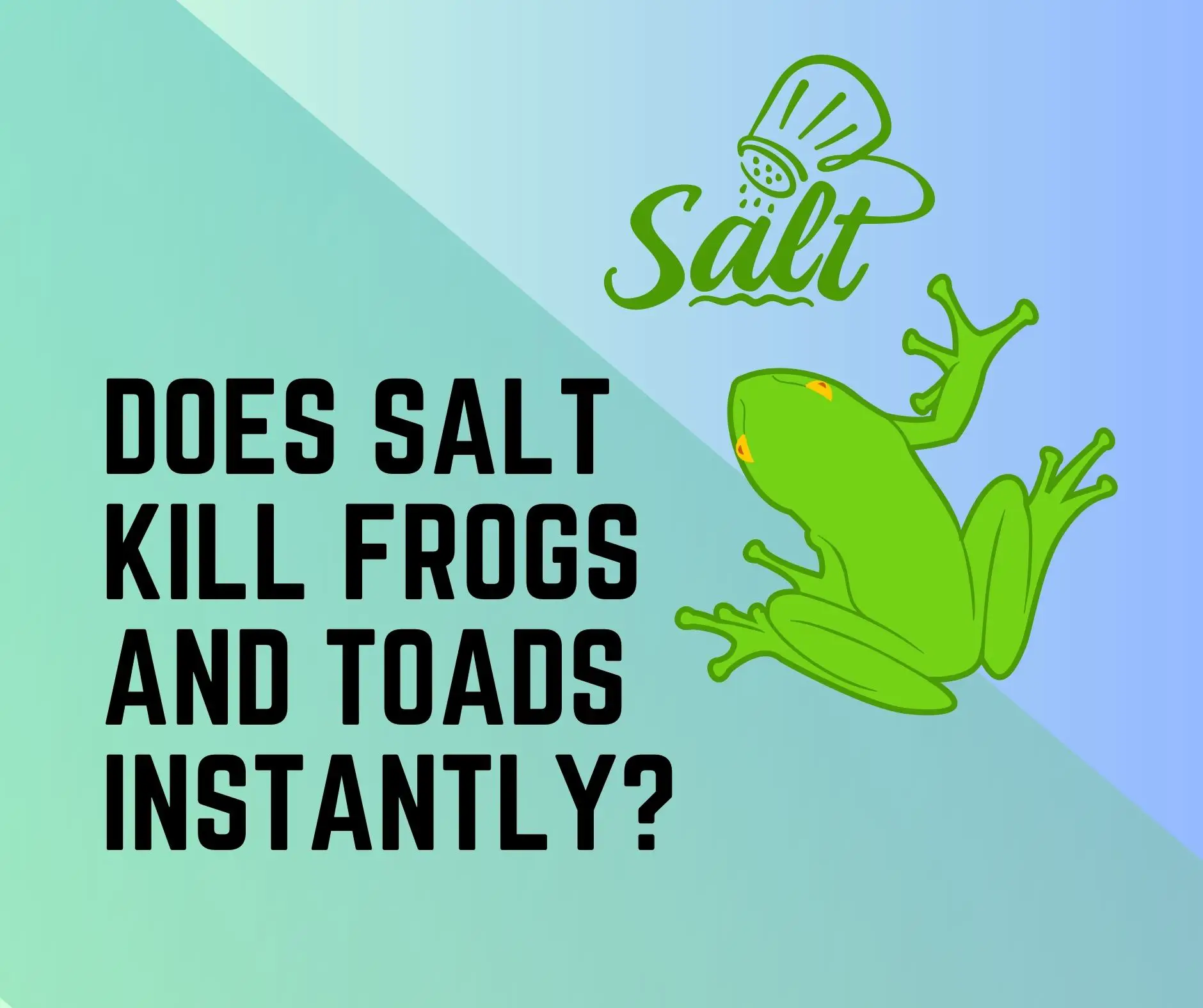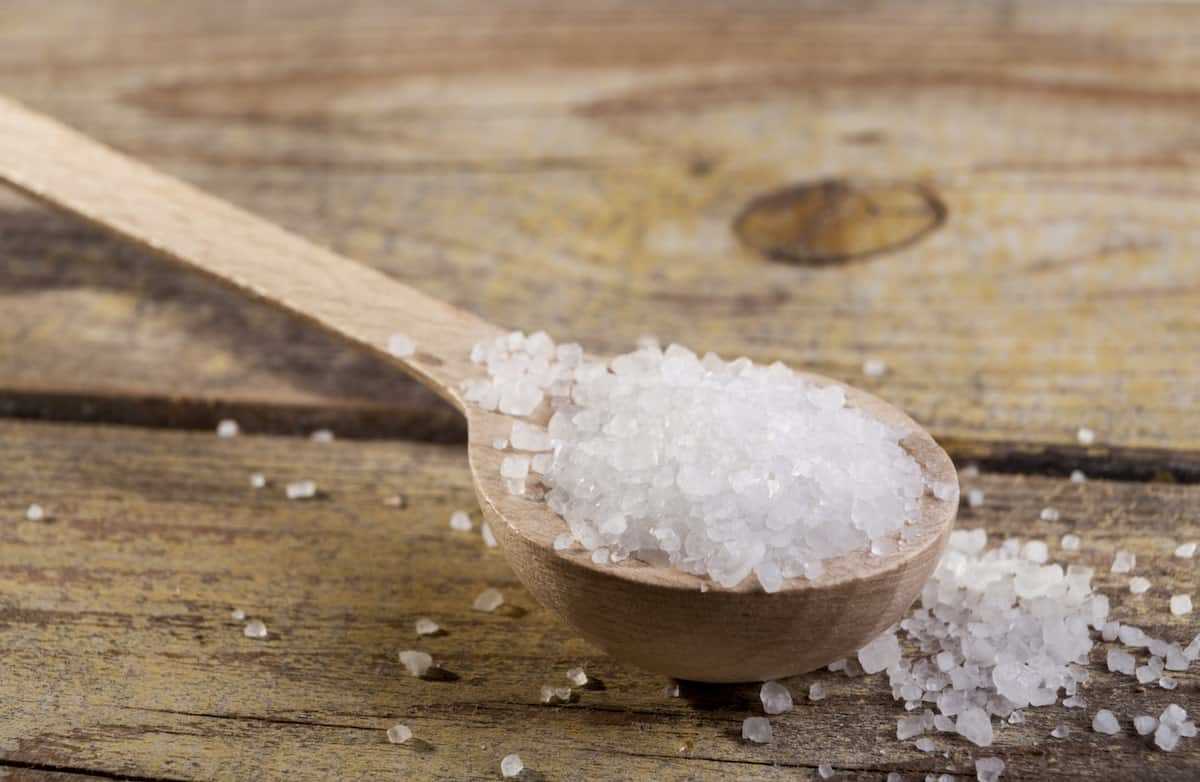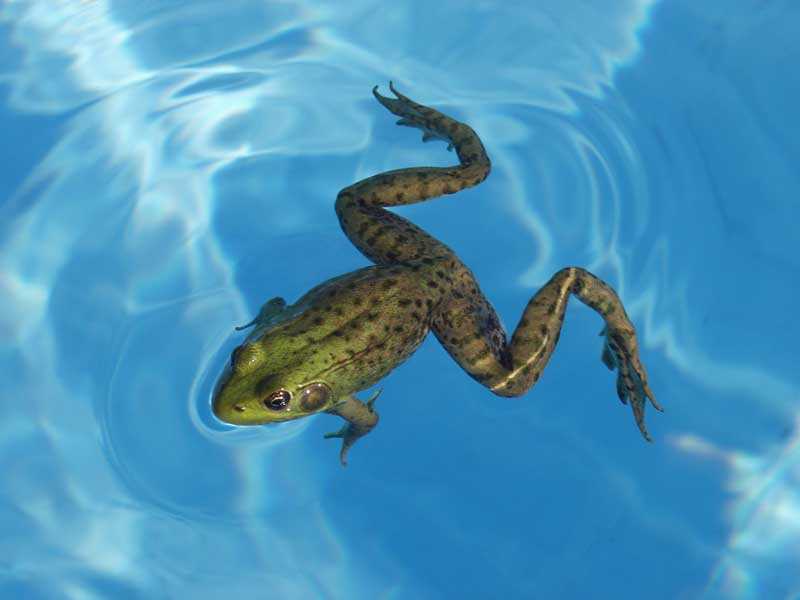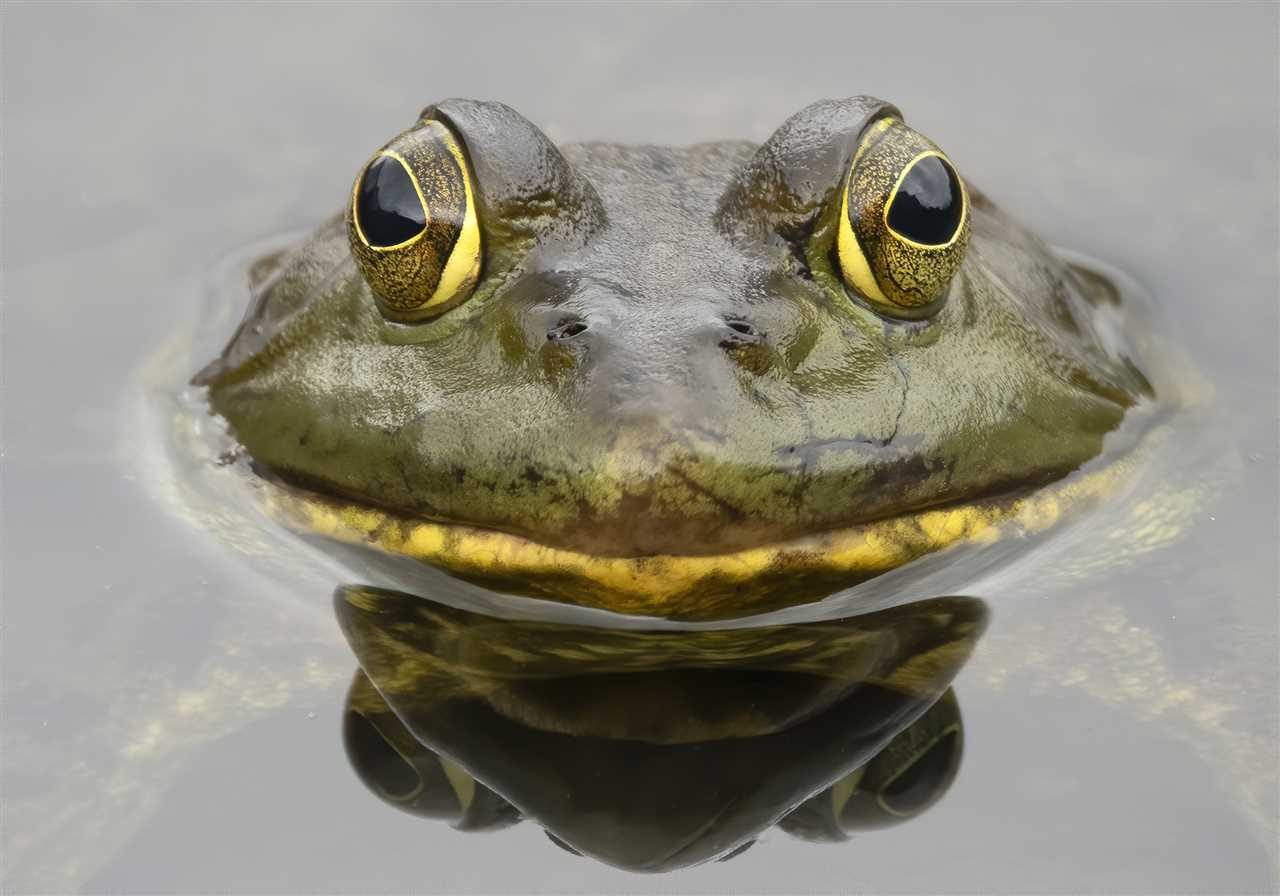
The impact of salt on frogs is an important topic of study for both scientists and conservationists. While frogs have the ability to tolerate certain levels of salt, excessive amounts can be harmful. Salt can disrupt the delicate balance of fluids in their bodies, leading to dehydration and other health issues. Furthermore, salt can affect the frogs’ ability to absorb water through their permeable skin, which is vital for their survival.
It is crucial to recognize the potential dangers of salt pollution in natural habitats. The excessive use of salt on roadways during winter months, for example, can result in the runoff of salt into nearby wetlands where frogs reside. This can create a toxic environment for these amphibians, making it difficult for them to thrive. As frogs are considered bioindicators of environmental health, their decline can also reflect larger ecological problems caused by salt pollution.
What is Salt?
Salt, a chemical compound made up of sodium and chloride ions, is an essential mineral for various biological processes in both animals and plants. It plays a critical role in maintaining the balance of fluids in the body, nerve function, muscle contraction, and the transmission of electrical impulses.
In nature, salt can be found in both land and water environments, including rivers, lakes, and oceans. It is commonly used as a seasoning for food, but its importance extends beyond culinary uses. Without salt, life as we know it would not be possible.
The Importance of Salt for Frogs
Frogs, like other animals, rely on a delicate balance of salt within their bodies to function properly. Salt helps to regulate the osmotic pressure of bodily fluids, ensuring the right balance of water and electrolytes. This is crucial for maintaining hydration, nerve function, and overall health.
In their natural habitats, frogs encounter salt in various forms, such as in the water they live in or the food they consume. While moderate levels of salt are necessary for their well-being, excessive amounts can have detrimental effects on their health and survival.
The Effects of Salt on Frogs
When frogs are exposed to high concentrations of salt, several negative effects can occur:
1. Dehydration
Excess salt can disrupt the water balance within a frog’s body, leading to dehydration. This can cause a loss of body fluids, impairing vital functions and potentially leading to death.
2. Electrolyte Imbalance
High salt levels can also disrupt the balance of electrolytes, such as sodium, potassium, and calcium ions, in a frog’s body. These ions play crucial roles in nerve and muscle function, and their imbalance can have harmful effects on the frog’s overall health.
3. Organ Damage
Excessive salt can damage various organs in frogs, including the kidneys and liver. These organs are responsible for filtering waste substances and maintaining the internal balance of the body. When they are damaged, a frog’s overall health and survival are compromised.
4. Disruption of Osmoregulation
Osmoregulation refers to the process by which organisms regulate the balance of water and electrolytes within their bodies. High salt concentrations can disrupt this delicate process, making it difficult for frogs to maintain the right balance of fluids and electrolytes. This can lead to severe health issues.
5. Impaired Growth and Development
Excessive salt exposure can hinder the growth and development of frog embryos and tadpoles. It can interfere with their cellular processes, disrupt their hormonal balance, and ultimately affect their ability to survive and thrive.
6. Decreased Immune Function
High salt levels can weaken a frog’s immune system, making it more susceptible to infections and diseases. This can further compromise their health and increase the risk of mortality.
The Lethal Effects of Salt on Frogs
While moderate salt concentrations are vital for the health of frogs, excessive amounts can have lethal effects:
1. Salt Toxicity
High salt concentrations can be toxic to frogs. They can disrupt essential biological processes, impair organ function, and ultimately lead to the death of the frog.
2. Acute Effects
Acute exposure to high salt concentrations can cause rapid and severe health issues in frogs, leading to immediate death in extreme cases.
3. Chronic Effects
Can Salt Kill Frogs?
The lethality of salt for frogs depends on various factors, including the concentration of salt and the duration of exposure. While moderate salt levels are necessary for their survival, excessive amounts can have deadly consequences. Different frog species may also have different tolerances to salt, with some being more susceptible to its detrimental effects than others.
Salt Concentration and Exposure Duration
Species Susceptibility
Importance of salt for frogs
Frogs are fascinating amphibians that play an important role in various ecosystems. Salt, or sodium chloride (NaCl), is a vital mineral for the overall health and survival of frogs. It serves several crucial functions within their bodies.
Salt regulation in frogs
Salt also plays a vital role in maintaining the proper function of a frog’s muscles and nerves. It helps conduct nerve impulses and ensures the normal functioning of muscle contractions. Without sufficient salt, frogs may experience muscle weakness, twitching, and even paralysis.
Role of salt in reproduction and growth
Salt is crucial for the reproductive success and growth of frogs. It helps regulate the production and development of eggs in females and contributes to the overall growth and development of tadpoles. Adequate salt levels enable frogs to reproduce and ensure the survival of their offspring.
Additionally, salt aids in the maintenance of proper metabolic processes within a frog’s body. It assists in energy production, hormone regulation, and the functioning of various enzymes. Without sufficient salt, frogs may experience physiological imbalances that can hinder their growth and overall health.
The impact of inadequate salt levels
If frogs do not have access to an adequate supply of salt, it can have detrimental effects on their health and survival. Insufficient salt intake can lead to dehydration, electrolyte imbalances, decreased immune function, impaired growth and development, and organ damage.
It is essential to understand the role of salt in ensuring the well-being of frogs and the importance of providing them with suitable habitats that enable adequate salt uptake. By preserving the natural environments where frogs thrive, we can help protect these incredible creatures and prevent the potential risks associated with salt deprivation.
The Effects of Salt on Frogs
Frogs are highly sensitive to salt and even small amounts can have detrimental effects on their health and survival. The presence of salt in their environment can disrupt their delicate balance of electrolytes and interfere with their ability to regulate their internal water levels, ultimately leading to dehydration and organ damage.
Salt can also disrupt the process of osmoregulation in frogs. Osmoregulation is the ability of an organism to maintain the proper balance of water and solutes in its body fluids. High salt concentrations can interfere with this process, leading to imbalances in the frog’s internal environment and impairing its ability to function properly.
Furthermore, exposure to high salt concentrations can impair the growth and development of frogs. Salt can interfere with essential physiological processes, such as hormone regulation and cellular division, which are crucial for normal growth and development. This can result in stunted growth, developmental abnormalities, and reduced overall fitness.
Another concerning effect of salt on frogs is its negative impact on their immune function. High salt concentrations can suppress the immune system, making frogs more susceptible to infections and diseases. This weakened immune system can further increase the risk of mortality for salt-exposed frogs.
Can salt kill frogs?
Frogs are highly vulnerable to high salt concentrations, which can have detrimental effects on their health and survival. While salt is essential for various physiological processes in frogs, excessive amounts can lead to severe consequences.
High salt concentrations in the environment can result in dehydration for frogs. Since frogs absorb water and electrolytes through their permeable skin, exposure to salty water can cause excessive fluid loss, leading to dehydration and ultimately death if not remedied.
Salt can also disrupt the electrolyte balance in frogs. Electrolytes such as sodium, potassium, and calcium play crucial roles in maintaining proper cellular function. Excessive salt intake can throw off this delicate balance, leading to various physiological disturbances in frogs.
Organ damage is another potential consequence of excessive salt exposure for frogs. The kidneys and other vital organs in frogs can suffer damage due to the disruption of physiological processes caused by salt toxicity. This damage can further compromise the overall health and survival of frogs.
Salt can also interfere with the osmoregulation process in frogs. Osmoregulation refers to the regulation of water and salt balance in an organism. Excessive salt intake can disrupt this process, making it difficult for frogs to maintain proper fluid and electrolyte levels, leading to further complications.
Impaired growth and development are also observed in frogs exposed to high salt concentrations. Salt toxicity can hinder normal growth and development in frogs, leading to stunted growth, developmental abnormalities, and reduced reproductive success.
Furthermore, salt can decrease immune function in frogs. A weakened immune system makes frogs more susceptible to infections and diseases, further compromising their health and survival.
The Effects of Salt on Frogs: Can Salt Kill Them?
Salt Concentrations and Dehydration
Electrolyte Imbalance
Excessive salt intake can disrupt the balance of electrolytes in a frog’s body. Salt consists of sodium and chloride ions, which are essential for various physiological functions. However, in high concentrations, these ions can disrupt the normal functioning of cells and organs. An electrolyte imbalance can interfere with nerve impulses, muscle contractions, and other vital processes in frogs, potentially leading to organ failure and death.
Organ Damage
Disruption of Osmoregulation
Osmoregulation refers to the process by which organisms control the balance of water and solutes in their bodies. Frogs rely on osmoregulation to maintain proper cellular function and hydration. When exposed to high salt concentrations, osmoregulation in frogs can be disrupted. This disruption can lead to imbalances in water and solute levels within the body, further contributing to dehydration and other adverse effects.
Impaired Growth and Development
Decreased Immune Function
Frogs exposed to high salt concentrations may also experience a decrease in immune function. The excessive salt can disrupt the delicate balance of the immune system, impairing the frog’s ability to fight off infections and diseases. This weakened immune system can leave the frogs vulnerable to various pathogens, further compromising their health and potentially leading to death.
Overall, the effects of salt on frogs can be lethal, depending on the concentration and duration of exposure. High salt concentrations can result in dehydration, electrolyte imbalance, organ damage, disruption of osmoregulation, impaired growth and development, and decreased immune function. It is crucial to recognize and mitigate the potential impacts of salt on frog populations to ensure their survival and conservation.
The Effects of Salt on Frogs: Organ Damage
When frogs are exposed to high salt concentrations, it can lead to severe organ damage. The presence of excessive salt in the body can disrupt the normal functioning of various organs, including the heart, kidneys, and liver.
Salt overload in frogs can cause the heart to work harder to pump blood, leading to an increased risk of cardiovascular problems. Additionally, the kidneys, which are responsible for filtering waste products from the blood, can be damaged by the presence of high salt levels.
The liver, an essential organ for metabolism and detoxification, can also suffer damage due to excess salt. Salt toxicity can impair the liver’s ability to perform its functions properly, potentially leading to further health issues in frogs.
Overall, the organ damage caused by high salt concentrations in frogs can have serious and long-lasting effects on their health and survival.
The Organ Damage caused by Salt
Salt can have detrimental effects on the organs of frogs, potentially leading to their death. Excessive salt intake can result in damage to various organ systems, hindering their proper functioning.
One of the primary organs affected by salt is the kidney. The kidney plays a crucial role in regulating the salt and water balance in the body. When frogs are exposed to high salt concentrations, the excess salt can overwhelm the kidney’s filtration and processing capabilities, leading to kidney damage.
Furthermore, the heart can also be negatively impacted by salt. Salt can disrupt the electrical activity of the heart, potentially causing irregular heart rhythms and impairing its ability to pump blood effectively. With compromised cardiac function, the overall health and survival of the frog may be severely compromised.
In addition to the kidney and heart, the liver can also suffer from salt-induced damage. The liver plays a vital role in detoxification and metabolism, and excessive salt exposure can impair its normal functioning. This can lead to a buildup of toxins in the body and further contribute to organ dysfunction.
Overall, the organ damage caused by excess salt can have severe consequences for frogs. It can disrupt various physiological processes and ultimately lead to their death. Therefore, it is crucial to understand the detrimental effects of salt and take measures to minimize its impact on frog populations.
The Disruption of Osmoregulation: How Salt Can Kill Frogs
High concentrations of salt can interfere with osmoregulation in frogs, leading to a variety of negative effects. Firstly, excessive salt exposure can cause dehydration in frogs. Salt has a drawing effect on water, causing it to be pulled out of the frog’s body. This loss of water can have severe consequences, as frogs rely on moisture for respiration and thermoregulation.
In addition to dehydration, high salt concentrations can also lead to an electrolyte imbalance in frogs. Electrolytes, such as sodium, potassium, and chloride, play a crucial role in maintaining the proper functioning of cells and organs. When the balance of these electrolytes is disrupted, it can result in abnormal cell function and, ultimately, organ damage.
Another critical aspect affected by salt is the frog’s ability to regulate its internal environment. Osmoregulation relies on the frog’s ability to control the movement of water and electrolytes across its cell membranes. When exposed to high salt concentrations, this mechanism can be overwhelmed, causing a disruption in the frog’s ability to maintain its internal balance.
Furthermore, salt can impair the growth and development of frogs, particularly in their early life stages. Excessive salt exposure during the tadpole stage can hinder the proper metamorphosis process, leading to deformities, stunted growth, and decreased survival rates.
Can Salt Kill Frogs?

The effect of salt on frogs is a subject of scientific research and concern. While salt is essential for many living organisms, including frogs, high concentrations of salt can have negative effects on their growth and development.
Importance of Salt for Frogs
Salt plays a vital role in the physiological processes of frogs. It helps regulate their osmotic balance, maintains proper cell function, and supports nerve and muscle activity. Salt is also necessary for the normal growth and development of frog larvae.
The Effects of Salt on Frogs
Exposure to high salt concentrations can lead to various detrimental effects on frogs. One significant effect is dehydration. When frogs are exposed to excessive salt levels, they lose more water through their skin, leading to dehydration and imbalances in their bodily fluids.
Another effect of high salt concentrations is electrolyte imbalance. Excess salt interferes with the normal balance of electrolytes such as sodium, potassium, and chloride, which are essential for proper nerve and muscle function. This imbalance can disrupt the frog’s normal physiological processes.
Furthermore, exposure to high salt levels can disrupt the process of osmoregulation in frogs. Osmoregulation is the maintenance of proper salt and water balance within an organism’s body. Disturbances in osmoregulation can lead to physiological stress and negatively impact the growth and development of frogs.
Impaired Growth and Development
One of the significant concerns regarding the effects of salt on frogs is its potential to impair their growth and development. Studies have shown that exposure to high salt concentrations can hinder the growth rate of frog larvae and affect their overall development. This can have long-lasting effects on the population dynamics and ecological balance of frog communities.
Additionally, high salt concentrations can interfere with the immune function of frogs. A weakened immune system makes frogs more susceptible to diseases and infections, further compromising their health and survival.
Decreased immune function in frogs due to salt exposure
One of the harmful effects of salt on frogs is the decreased immune function. When frogs are exposed to high concentrations of salt, it can have a negative impact on their immune system. Normally, frogs have a sophisticated immune system that helps them fight off infections and diseases. However, when they are exposed to excessive salt, their immune function is compromised.
Furthermore, salt exposure can also lead to inflammation and other immune-related disorders in frogs. The excessive salt levels can cause inflammation in various tissues and organs, further weakening their immune system. This makes the frogs more vulnerable to opportunistic infections, which can have detrimental effects on their overall health and survival.
In addition to the immediate effects, the decreased immune function caused by salt exposure can also have long-term consequences. If frogs are repeatedly exposed to high salt concentrations, their immune system may become permanently compromised. This can lead to chronic health issues and a higher risk of mortality.
Do Salt Kill Frogs?

Salt toxicity is a serious concern for frogs, as high levels of salt can have lethal effects on their health and survival. Frogs have a delicate balance of electrolytes and fluids within their bodies, and exposure to excessive amounts of salt can disrupt this balance and lead to various health problems.
Exposure to high salt concentrations can result in dehydration for frogs. Salt draws water out of the cells, causing them to shrink and lose their ability to function properly. This can lead to severe dehydration and ultimately death if the frog is unable to replenish its water levels.
In addition to dehydration, excessive salt can also cause an electrolyte imbalance in frogs. Electrolytes, such as sodium, potassium, and chloride, are essential for proper cellular function and nerve conduction. When these electrolyte levels are disrupted by high salt concentrations, it can affect the frog’s ability to regulate its bodily functions.
Osmoregulation, the process by which frogs maintain the balance of water and electrolytes in their bodies, can also be disrupted by excessive salt. Salt interferes with the osmotic balance, making it difficult for frogs to regulate their water and electrolyte levels effectively. This disruption can further exacerbate the dehydration and electrolyte imbalance mentioned earlier.
In addition to these physiological effects, high salt concentrations can also impair growth and development in frogs. Salt exposure can negatively impact their metabolic processes, leading to stunted growth and developmental abnormalities. This can have long-term consequences for the reproductive success and overall population health of frogs.
Decreased immune function is another concern for frogs exposed to high salt levels. Salt can suppress the immune system, making frogs more susceptible to infections and diseases. This can further compromise their health and increase their mortality rate.
The Lethal Effects of Salt on Frogs
There are two main categories of salt toxicity in frogs: acute effects and chronic effects.
Acute effects occur when frogs are exposed to high concentrations of salt for a short period of time. This can happen when frogs encounter saltwater habitats, salt spills, or saline water bodies. When exposed to high salt concentrations, frogs can suffer from immediate dehydration, electrolyte imbalances, and organ damage.
Both acute and chronic salt toxicity can have serious consequences for frogs. It can lead to a decreased ability to absorb water, resulting in dehydration and ultimately death. The electrolyte imbalances can interfere with normal bodily functions and cause organ damage, particularly to the kidneys and liver. Disruption of osmoregulation can affect the frog’s ability to maintain a stable internal environment, further compromising their health.
Frogs vary in their susceptibility to salt toxicity, with some species being more tolerant than others. Certain frog species have evolved adaptations to tolerate or even thrive in saline environments, while others are more sensitive and can be severely affected by even small increases in salt concentration.
The Lethal Effects of Salt on Frogs
One of the most important factors to consider when studying the effects of salt on frogs is its potential to kill them. Salt toxicity can have both acute and chronic effects on these amphibians, leading to their demise in certain circumstances.
Acute effects: Exposure to high salt concentrations can rapidly impair the health and survival of frogs. When frogs come into direct contact with saltwater or heavily salted environments, it can disrupt their osmoregulation process. This results in dehydration, electrolyte imbalances, and organ damage. Additionally, high salt concentrations can hinder the growth and development of frogs and weaken their immune function.
Chronic effects: Prolonged exposure to salt can have long-term detrimental effects on frog populations. Chronic salt exposure can lead to the accumulation of salt in their bodies, which can disrupt their osmoregulation and cause severe dehydration. This can result in organ failure, impaired growth, weakened immune systems, and ultimately death.
Overall, the lethal effects of salt on frogs depend on the concentration of salt and the duration of exposure. Different frog species may have varying susceptibilities to salt toxicity, making it important to consider these factors when studying their populations in salt-affected environments.
The Chronic Effects of Salt on Frogs
Exposure to high concentrations of salt over a prolonged period can have detrimental effects on frogs. This chronic exposure to salt can lead to various health issues and can ultimately be lethal for these amphibians.
One of the main chronic effects of salt on frogs is the disruption of osmoregulation. Osmoregulation is the process by which organisms maintain a balance of water and electrolytes in their bodies. Salt can interfere with this process, leading to imbalances in fluid and electrolyte levels.
Furthermore, salt can also cause organ damage in frogs. The excessive salt in their systems can put a strain on their kidneys and other organs involved in filtering and excreting waste. Over time, this can lead to organ dysfunction and failure.
Another chronic effect of salt on frogs is impaired growth and development. Salt can hinder the proper growth and development of tadpoles, which can negatively impact their survival and reproductive capabilities as adults.
In addition to physical effects, chronic exposure to salt can also result in decreased immune function in frogs. The high salt concentrations can weaken their immune systems, making them more susceptible to infections, diseases, and other health problems.
Overall, the chronic effects of salt on frogs can be severe. From disrupting osmoregulation and causing dehydration, to organ damage, impaired growth, and decreased immune function, salt can have a detrimental impact on the health and survival of these amphibians.
Can Salt Kill Frogs?

Salt is a substance that is commonly used for flavoring and preserving food. While it is essential for human health, excessive salt can have detrimental effects on certain organisms, including frogs. The question remains: can salt actually kill frogs?
The answer to this question is yes. The effects of salt on frogs can be lethal, particularly when they are exposed to high concentrations of salt for extended periods of time. Salt can have numerous negative effects on frogs, including dehydration, electrolyte imbalance, organ damage, disruption of osmoregulation, impaired growth and development, and decreased immune function.
Exposure to high concentrations of salt can lead to dehydration in frogs. Salt draws water out of cells through osmosis, causing the frogs to lose water and become dehydrated. This can result in lethargy, weakness, and eventually death if the frogs are not able to replenish their water levels.
Electrolyte imbalance is another dangerous effect of salt on frogs. Salt contains sodium and chloride ions, which are important for maintaining the balance of electrolytes in the body. However, excessive salt can disrupt this balance and lead to changes in blood pH and electrolyte levels, which can be fatal for frogs.
Organ damage is also a potential consequence of salt exposure. The high salt concentrations can cause damage to the kidneys, liver, heart, and other organs in frogs. This can impair their normal physiological functions and ultimately result in organ failure.
Salt can also disrupt the osmoregulatory systems of frogs. Osmoregulation is the process by which organisms maintain a proper balance of water and solutes in their bodies. Exposure to high salt concentrations can interfere with this process and disrupt the frogs’ ability to regulate their internal environment.
Additionally, salt can decrease the immune function of frogs. Immune suppression can make frogs more susceptible to diseases and infections, further compromising their health and increasing their likelihood of death.
Overall, the lethal effects of salt on frogs are a result of salt toxicity. The toxicity can be acute, meaning that it occurs immediately after exposure to high salt concentrations, or it can be chronic, meaning that it develops over time with continued exposure. Both acute and chronic salt toxicity can lead to the death of frogs, depending on the salt concentration and duration of exposure.
Can Salt Kill Frogs? Salt Concentration and Exposure Duration
Some frog species have developed physiological adaptations that allow them to tolerate higher salt concentrations than others. These adaptations include specialized salt glands, which help excrete excess salt from the body, and efficient mechanisms for regulating water and electrolyte balance.
However, even frogs with these adaptations have limits to their salt tolerance. If exposed to high concentrations of salt for a prolonged period of time, these frogs can still experience negative effects and potential death.
The lethal effects of salt on frogs can occur through both acute and chronic exposure. Acute exposure refers to a sudden and high concentration of salt, while chronic exposure refers to prolonged exposure to lower concentrations of salt.
Acute exposure to high concentrations of salt can lead to immediate dehydration, electrolyte imbalances, organ damage, and disruption of osmoregulation in frogs. This can ultimately result in the death of the frog if not treated promptly.
Chronic exposure to lower concentrations of salt can have long-term detrimental effects on frogs. It can impair their growth and development, decrease their immune function, and make them more susceptible to diseases and infections. Over time, these cumulative effects can weaken the frog’s overall health and increase its mortality rate.
Therefore, it is essential to consider the salt concentration and the duration of exposure when assessing the potential effects of salt on frogs. It is also crucial to monitor and regulate the salt levels in their habitats, such as freshwater bodies or captive environments, to ensure the well-being and survival of frogs.
Species Susceptibility: Can Salt Kill Frogs?

Salt concentration and exposure duration play a crucial role in determining the susceptibility of frogs to the lethal effects of salt. Different species of frogs have varying tolerance levels for salt, which means that some species may be more susceptible to salt-related mortality than others.
Some frog species have evolved to live in habitats with naturally high salt concentrations, such as salt marshes or brackish water. These species have developed physiological adaptations that enable them to withstand high salt levels without suffering adverse effects. They have specialized mechanisms for regulating osmoregulation and eliminating excess salt from their bodies.

I’m Lena Adams—a product of an unconventional upbringing in the African wilderness. My father, a daring explorer of African wildlife, sparked my fascination with reptiles, a passion that intertwined with the tragic loss of my mother during an expedition, leaving an indelible mark on my life. Driven to understand the creatures that captivated my parents, I embarked on my journey, sharing insights about reptiles, frogs, and lizards on my website. Through my explorations and conservation efforts, I honour my family’s legacy while seeking connections—to the creatures, nature, and the mother whose presence I yearn to understand.
